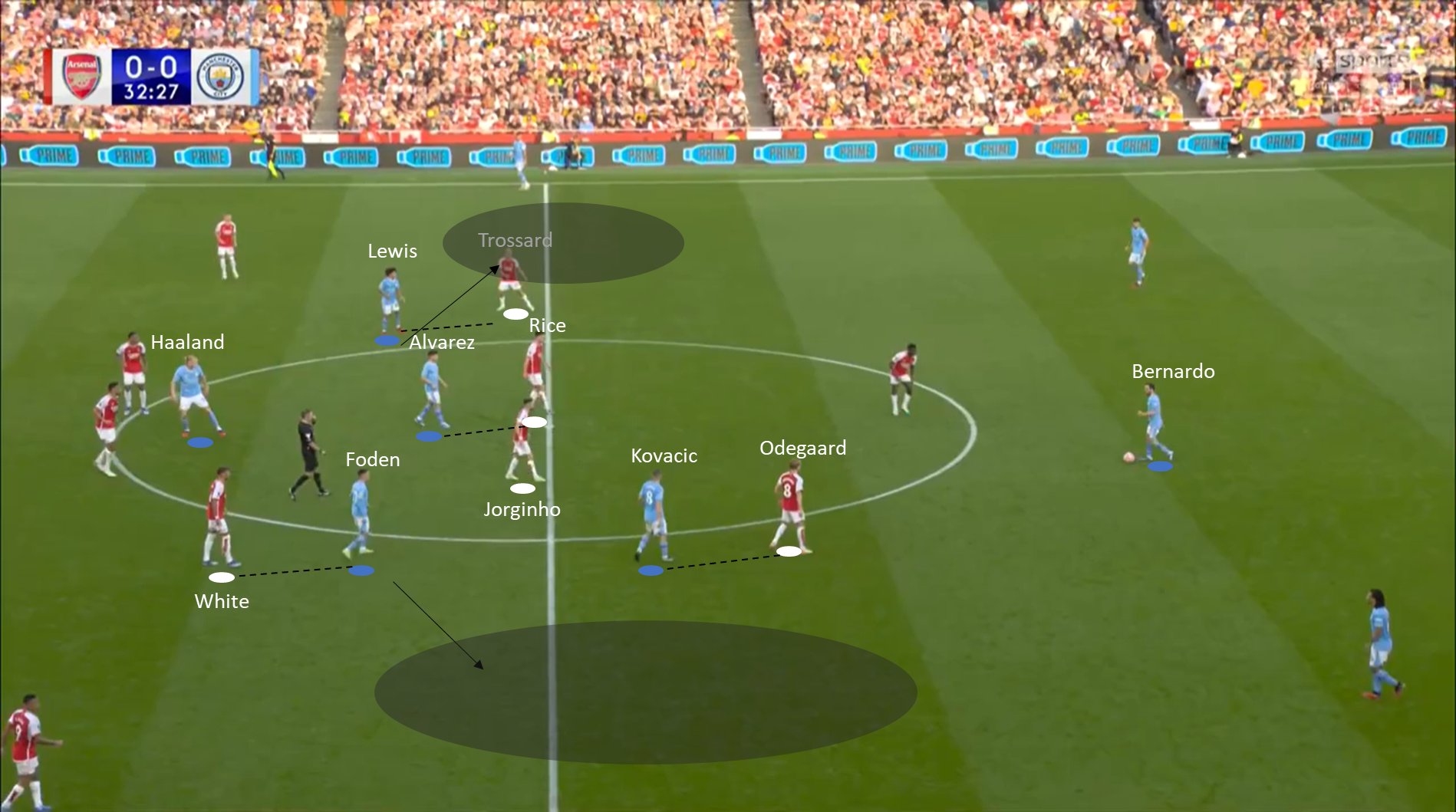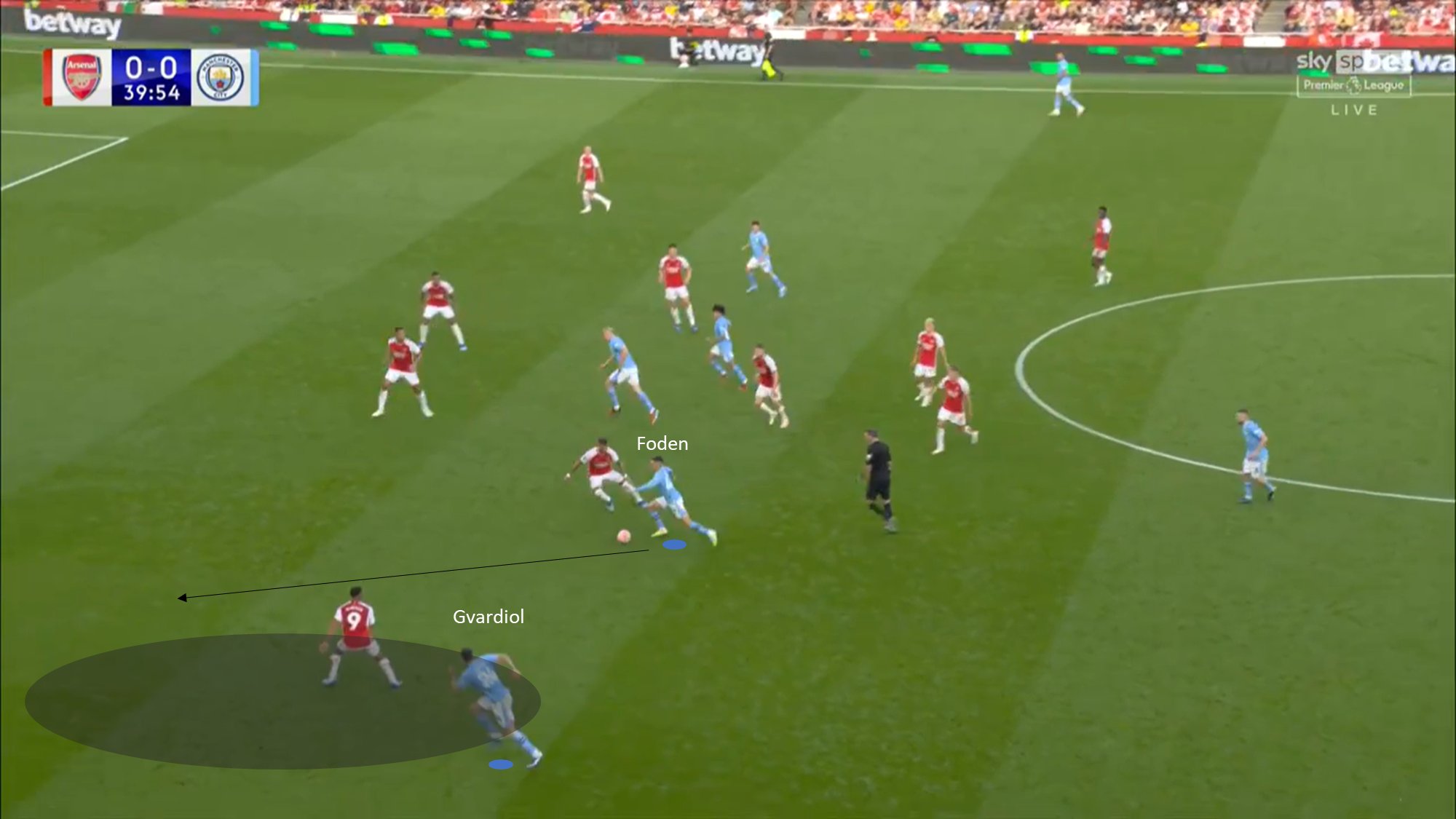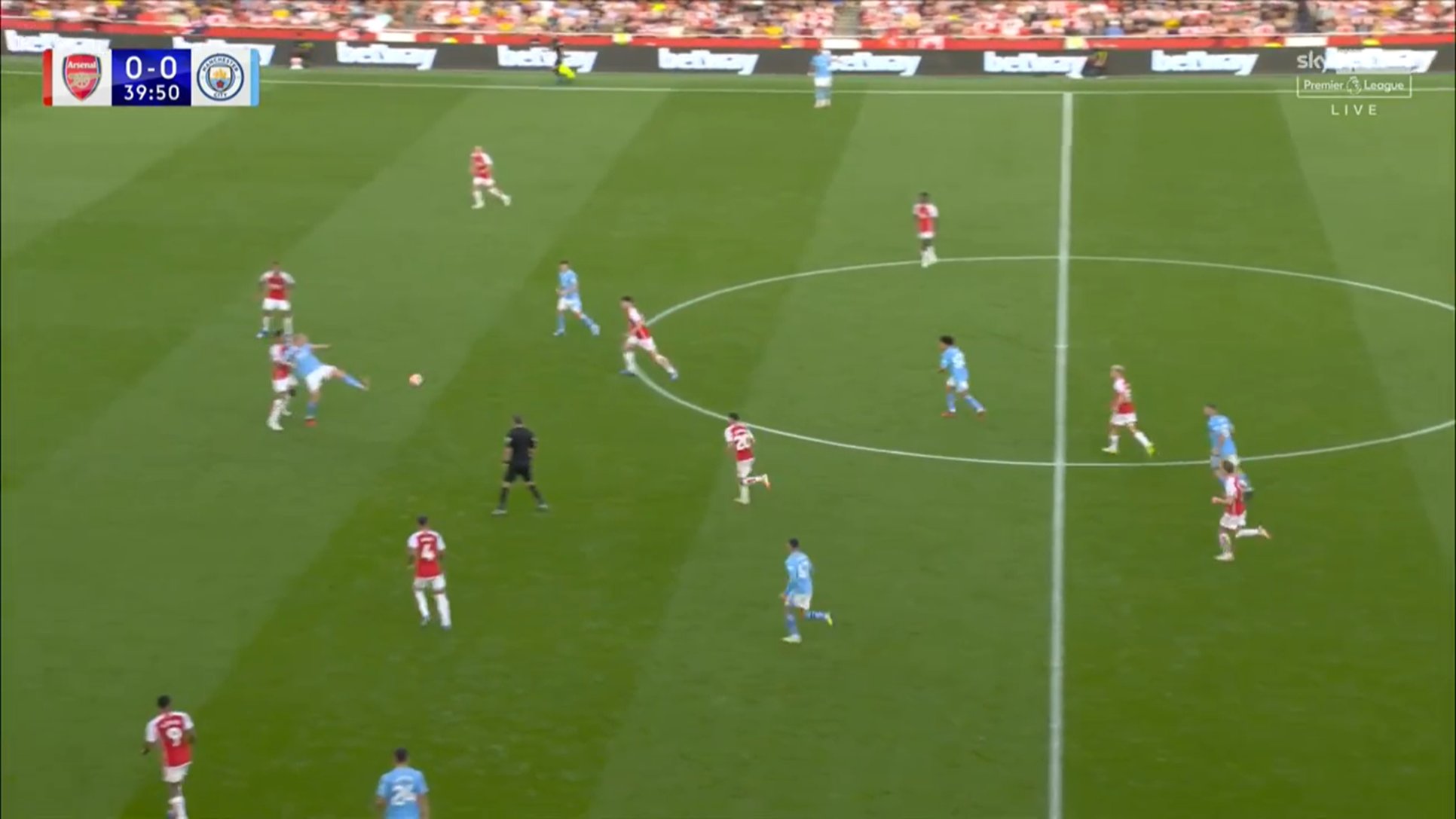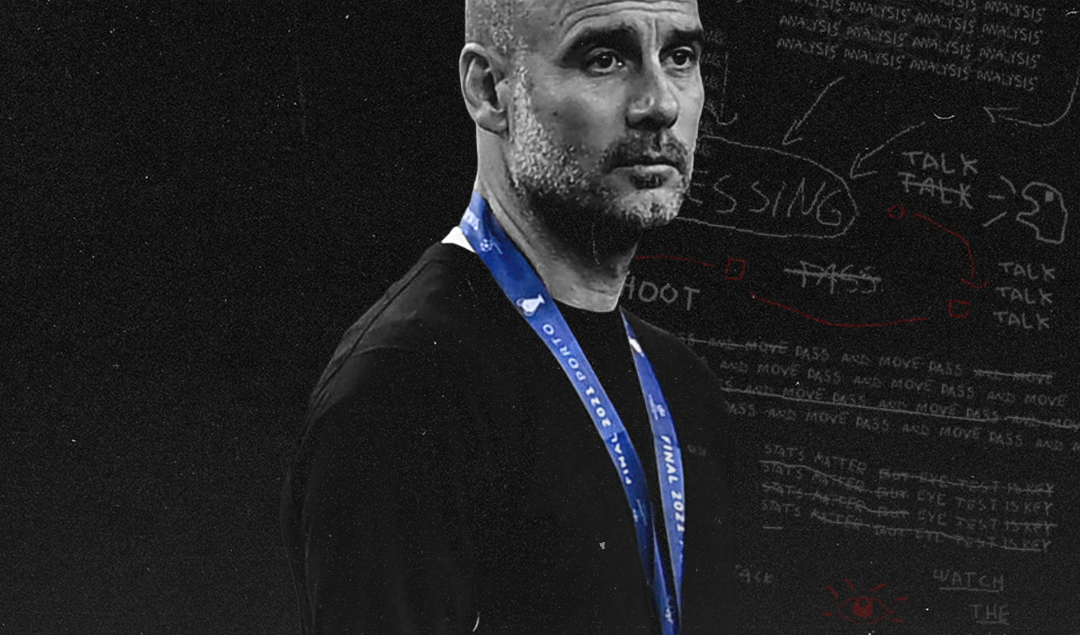Why Didn’t Manchester City Go Longer to Erling Haaland in Their Defeat to Arsenal?
Mikel Arteta has finally beaten his former boss Pep Guardiola, ending a streak of 12 straight losses for Arsenal against Manchester City, with a late goal from substitute Gabriel Martinelli seeing the Gunners prevail 1-0 at the Emirates. In an attritional battle not perceived as the greatest game entertainment-wise, the tactics were fascinating. The biggest takeaways were the fact that City whilst having more of the ball were incredibly narrow, to the point where Phil Foden and Julian Alvarez seen as the wide forwards were tucking inside.
Guardiola mentioned after the game that without Rodri this was on purpose. He wanted players in the centre of the pitch able to take care of the ball. The problem the Spaniard ran into was Arsenal clogging the middle of the pitch. If you flood the centre of the pitch with your midfield sticking with players man to man, progressing the ball in the middle of the pitch is going to be difficult. What became even more eye-opening was the fact Foden and Alvarez barely dragged their markers out or moved around, they were instructed to stay central and followed suit.

Manchester City playing conservatively is Man City doing what they know best, keeping the ball. Except this time without the purpose of penetration. This isn’t the first time Guardiola has done this. Remember Real Madrid away last season? Pep was happy to keep things the way they were for the last 20 minutes at 1-1 and get a draw then thrash them at the Etihad.
Within the context of the game being so early in the season and away at the Emirates, it made some sense. Doubly, Arsenal’s press was tight and intense whenever City had a spanner in the works was the fact that whenever Manchester City actually did go wide and particularly go long to Erling Haaland, they looked dangerous. The way to get around teams going man-to-man in midfield is to go wide to your wingers or full-backs.


It’s a little baffling that when City tried to play it to Foden and Alvarez in the centre or half-spaces, they were marked off and unable to turn. But, when the answers were right in front of them in terms of going wide or long to Haaland they didn’t bother switching anything mid-game.
Even Guardiola sometimes is afraid to gamble, but Haaland’s aerial abilities could’ve been the answer to Arsenal’s work without the ball. Haaland is possibly the best finisher of all time, in the same game last season it was probably his best game in a Man City shirt. If the service to him wasn’t so fluent, City should’ve opted for the alternative.
Instead, City have paid the price; having begun their season with seven straight victories as well as a win against Sevilla in the UEFA SuperCup, the Cityzens have since exited the EFL Cup at the hands of Newcastle, lost 2-1 to Wolves and 1-0 to Arsenal, and beaten RB Leipzig 3-1 — coincidentally, the only match of that four-game spell where Rodri was available. They’ll be counting on the Spaniard’s return as they host Brighton before traveling to Young Boys and Manchester United, whilst Arsenal will travel to Chelsea and Sevilla before hosting Sheffield United.
By: Dharnish Iqbal / @dharnishiqbal
Featured Image: @GabFoligno / David Ramos – AFP
